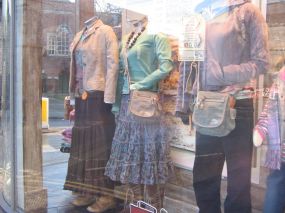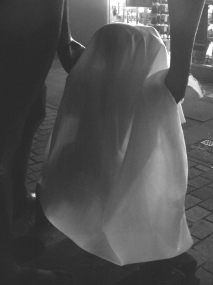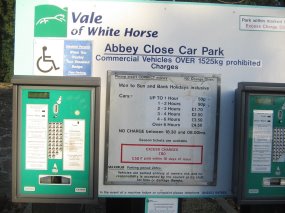Fat Face

There is a new shop in town called Fat Face. They sell what they describe as 'active wear and outdoor clothing.' The shop is at the corner of High street and Bridge street, the shop with the round corner window where Ciro Citterio used to be until they went into liquidation.
Fat Face clothes are fairly pricey and I haven't bought anything yet. But I do like that bright window display, and those young looking clothes.
I hope they will do enough business to stay. Maybe I'll have to pay a bit more for my next purchase of 'active wear or outdoor clothing' to help keep them in Abingdon.





